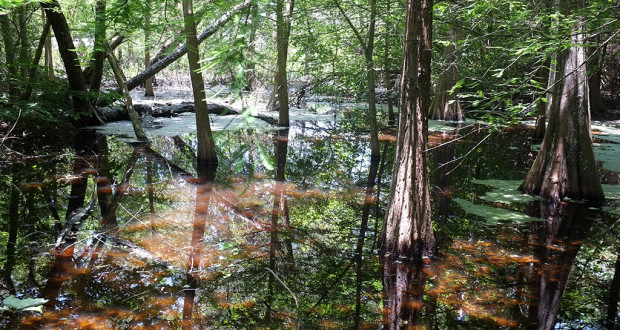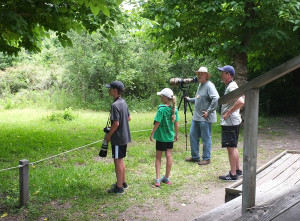As you enter the sanctuary you’re greeted by a bird sighting board and, during the spring, volunteers who will answer questions and collect your $7 daily or $25 annual fee for access. A wooden grandstand looks out on an opening in the trees and the small Purkey’s Pond, where migratory birds stop to drink and bathe. During prime birding season the gallery is thick with binoculars and long camera lenses.
Just around the corner on the boardwalk trails is a bird blind for photographers. The trail to the right leads to a small cypress swamp – Prothonotary Pond. Once populated by invasive Chinese tallow trees, it was transitioned to a native landscape.
The trails in the santuary are a mix of boardwalk and bare forest floor. One boardwalk trail leaves the forest and passes through a short stretch of prairie leading to an observation pergola that overlooks the east side of the sanctuary.
Boy Scout Woods is ideally located to capture the “fallout” of neotropical migrants as they reach the Texas Coast on their long journey that began in Central and South America.
What is amazing about the sanctuary and many others on the Texas Coast is how quickly you transition from civilization to nature. The entrance to Boy Scout Woods is next door and across the street from homes and commercial businesses. Once you pass through the gate, you step into wilderness, although you can’t escape the sounds of life on the streets nearby.
SANCTUARY GALLERY








You must be logged in to post a comment.